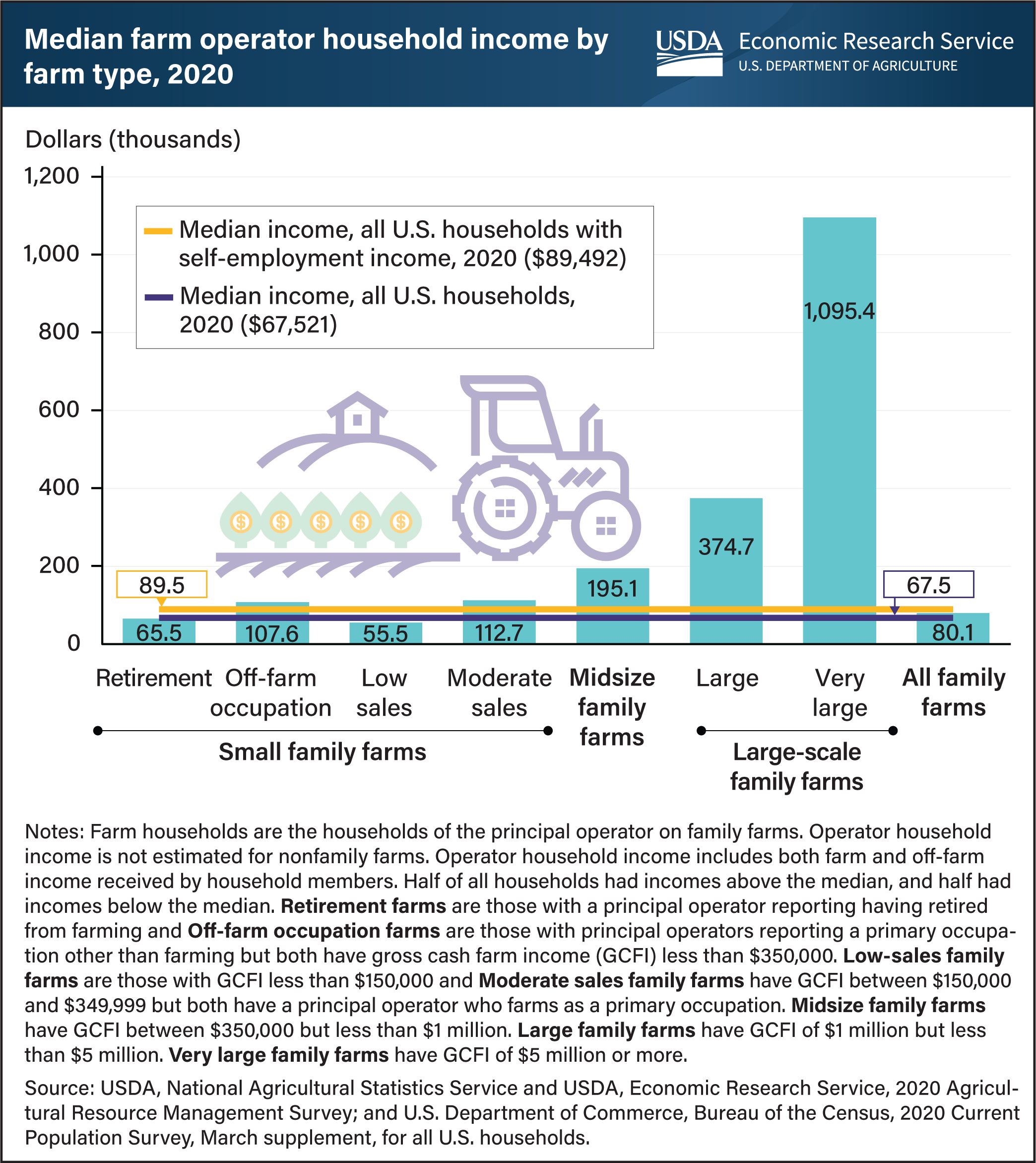Farm operator households had higher median income compared with all U.S. households in 2020
- by Christine Whitt
- 8/18/2022

In 2020, the median value of farm operator household income was $80,060, almost a fifth greater than that of all U.S. households ($67,521) but lower than the median among U.S. households reporting self-employment income ($89,492). Median total household income increased with farm size according to classifications by the USDA, Economic Research Service. Two types of small family farms had median household income below both the median for U.S. households and U.S. households with self-employment income: low-sales farms, those with gross cash farm income (GCFI) less than $150,000 and a principal operator who farms as a primary occupation, and retirement farms, GCFI less than $350,000 and a principal operator reporting having retired from farming. Low-sales and retirement farms account for about 45 percent of the 2 million farms in the United States. On the other hand, large family farms, GCFI of $1 million but less than $5 million, had a median income of almost $375,000, far exceeding the median for both all U.S. households and U.S. households with self-employment income. Very large family farms, GCFI of $5 million or more, had the highest median income at more than $1 million. Large and very large family farms account for about 3 percent of farms. Most farm households earn the majority of their income from off-farm sources such as wages, which are used to offset farming costs. This chart appears in the ERS report America’s Diverse Family Farms, 2021 published December 2021.

